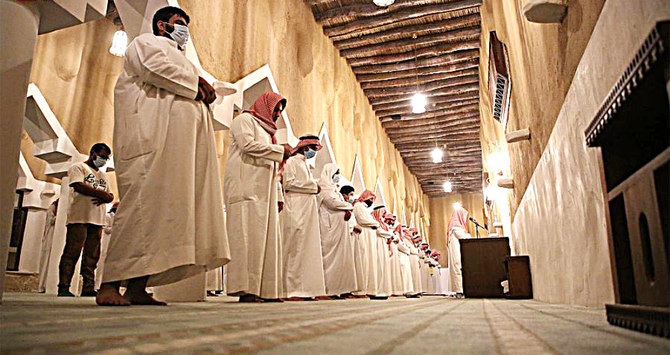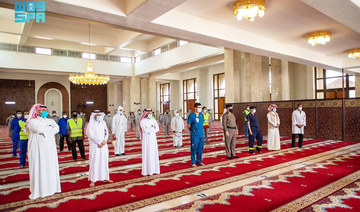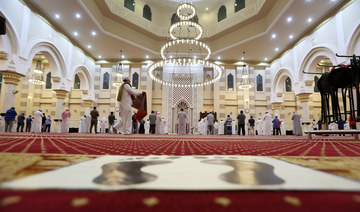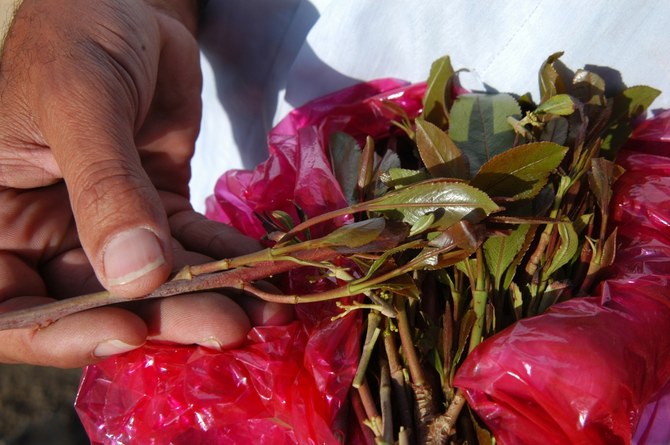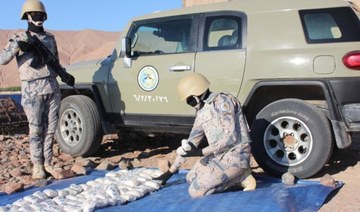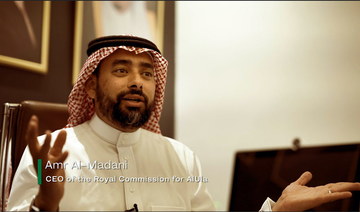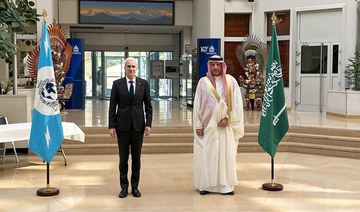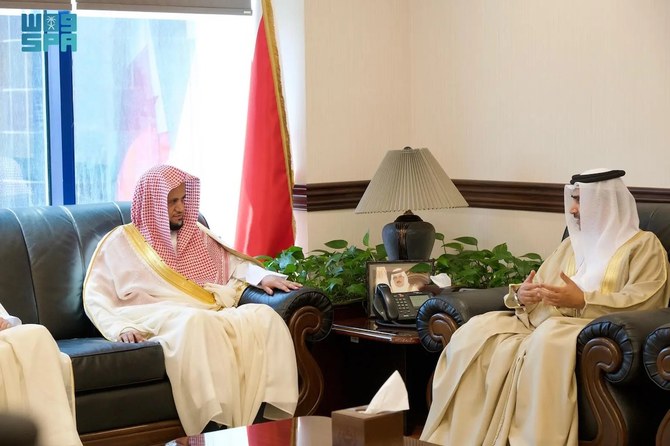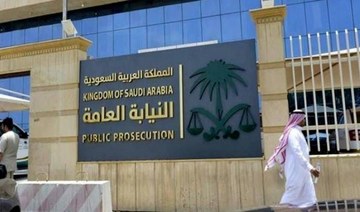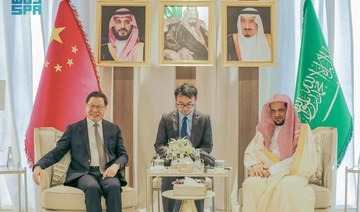JEDDAH: The Arabian Peninsula is home to rich architecture and religious history that includes a great number of ancient mosques from the beginning of the Islamic era.
Saudi Arabia has the privilege of taking care of the Two Holy Mosques, an honor that has been carried and inherited for decades starting with the founding king, the late King Abdul Aziz.
Crown Prince Mohammed bin Salman launched a project in 2018 that aims to revive more than 130 historic mosques around the Kingdom as mosques are being renovated in several regions.
The project aims to restore and rehabilitate these mosques, taking into consideration preserving the element of ancient construction and its components.
These mosques have formed different historic architectural patterns that vary according to cultural, geographical, and topographical conditions. This includes the Jomaa’ and the Qiblatain mosques, built by the Prophet Muhammad, and others that were built by his companions and followers such as the Salman Al-Farsi Mosque and the Mosque of Abu Bakr Al-Siddiq.
The then-Saudi Commission for Tourism and National Heritage (SCTH) counted nearly 1,300 historic mosques in various regions of the Kingdom.
“Historical mosques of Saudi Arabia date back to different periods of time, including the early period of Prophet Muhammad more than 1,400 years ago, the early Islamic era, and the various Islamic states, including the Umayyad, Abbasid and Mamluk states, until the era of the Saudi state,” Sultan Al-Saleh, cultural heritage consultant and director of the Saudi Heritage Preservation Society, told Arab News.
“In the Hijaz region, historical mosques are distinguished with their white limestone construction, especially in Jeddah city. On the other hand, the rest of western region cities’ historic mosques are built from stone and mud.”
Mosques on the western coast are characterized by the Roshan pattern as a coastal architectural style, which features elaborate wooden bay windows that front many of the surviving houses. Mosques in the Tihama area, from Taif down to Jizan city, are influenced by the Tuhami style that features stone, straw, and tree branches. In the Sarawat Mountains, building materials were based on stones due to their mountainous nature, he noted.
In Asir, mosques were made of mud protected by stones of horizontal cut. Riyadh, Qassim, and Hail regions focused on clay as a basic building material, while the coastal area of the Eastern Province relied on mud and limestone.
The Jawatha Mosque in Al-Hofuf is 1,435 years old and was established during the 7th Hijri year by the Abd Qais tribe. That is where the second Friday prayer in Islam was performed after it was first performed at Prophet Muhammad’s mosque in Madinah.
HIGHLIGHT
In Asir, mosques were made of mud protected by stones of horizontal cut. Riyadh, Qassim, and Hail regions focused on clay as a basic building material, while the coastal area of the Eastern Province relied on mud and limestone.
It is also known that a number of prophet companions have been buried in the same area.
Nahid Al-Surani, former maintenance director-general of King Fahd University for Petroleum and Minerals, said that what is known to be the “Old mosque” or “Saudi camp mosque” dates back to the year 1939 and is located at the university’s campus long before the university was established.
“The mosque was built when the late King of Saudi Arabia Abdul Aziz visited Dhahran to inaugurate the first oil shipment,” he said. “The old mosque was built by Yemeni labor who brought shale stones from the Alkhobar sea to use in constructing the walls and the two minarets.”
The original building is still in the same form it was built, but the expansion was done using today’s building materials, he added.
“The mosque is well taken care of and was renovated many times, and has lost some part of its original design in the first renovation,” Al-Surani noted. “Its tall wooden windows were replaced with smaller ones to be air-conditioned, and are still used today for Taraweeh prayer, Fridays, and also for Eid.” Some of the old mosques accommodate 5,000 worshippers, such as King Saud Mosque in Jeddah, while others are smaller such as the Al-Mald Mosque in Al-Baha that accommodates nearly 30 worshippers.
According to Al-Saleh, restoration of some historic mosques included expansion to increase capacity. Such was the case for the Mansaf Mosque in the Zulfi governorate, which used to be limited to only 87 worshippers but now accommodates more than 150 people.
“The Crown Prince Project to Develop Historical Mosques was based on restoring historical mosques and reviving all forms of life, including practicing prayers, as well as the social roles that used to take part in the building,” Al-Saleh said.
“It is important to mention that the restoration process differs from one mosque to another according to its geographical location and the building materials used in its construction.”
When carrying out the restoration process, the materials of the mosque must be taken into consideration, he said. The authenticity of the mosque and its historical style must be preserved accordingly while adding new materials that do not correspond to the nature of the mosque should not be used.
According to the developments of the project, the restoration process of 30 historical mosques in various regions of the Kingdom has been completed. The Al-Duwaihra Mosque in Diriyah and the historic Al-Hanafi Mosque in Al-Balad, Jeddah are among some of the completed mosques.
Although mosques are the meeting point for worshippers throughout the year, many feel a greater sense of care during Ramadan due to the sanctity and spirituality of the holy month. Ramadan is a time when mosques host extra social functions, such as holding iftar tables, memorizing the Qur’an, attending Islamic lectures, and so on.
“All the newly opened and revived historic mosques were significantly highlighted in the updated report of the crown prince project to spread the news about its availability to receive worshippers during the month of Ramadan,” Al-Saleh said.
“These mosques embody the attention and care paid by the Saudi government in preserving such national cultural heritage and monuments, especially the historic mosques, which are a fundamental pillar of our Islamic cultural heritage.”
Abdul Aziz Hanash, a researcher architect and urban designer, who is enthusiastic about historic buildings, told Arab News about the most ancient mosque in Riyadh city at Qasr Al-Hukm Palace.
The Imam Turki bin Abdullah Mosque is one of the largest mosques in the city and has undergone many expansions, he said. The mosque is directly connected from the first floor to Qasr Al-Hukm Palace via two bridges across Assafah Square.
“The importance of this mosque comes from its rich history and role within the surrounding environment,” Hanash said. “It was the venue where scholars and teachers meet for religious activities. It was rebuilt as part of the Qasr Al-Hukm Development Program, where the Royal Commission for Riyadh City rebuilt the mosque to accommodate around 17,000 worshippers.”
Other restored mosques that have been recently rehabilitated as part of crown prince’s project include the Al-Twaim Mosque in Al-Twaim city, Riyadh, the Jarir Al-Bajali Mosque in Taif governorate, the Abu Bakr Mosque in Al-Hofuf, Al-Ahsa governorate, and the Al-Atawlah Heritage Mosque, which is nearly 40 kilometers from Al-Baha governorate and one of the oldest mosques in the area.



